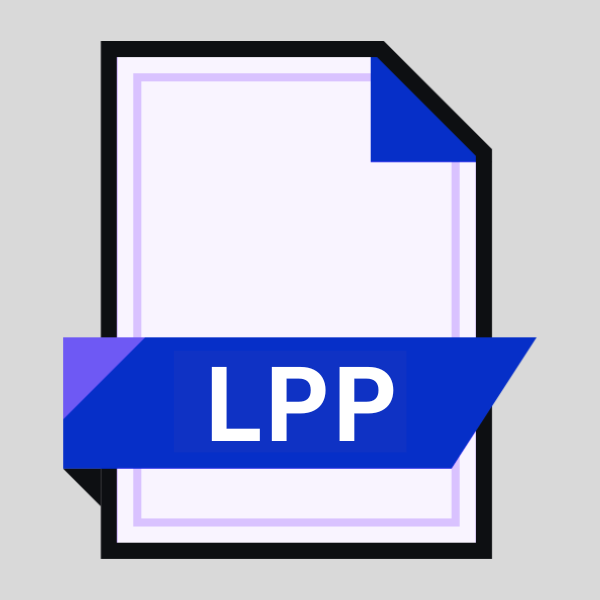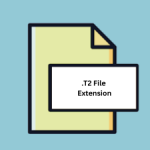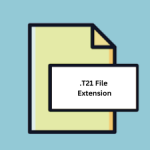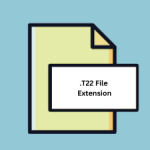.LPP File Extension

LabelPrint Project File
| Developer | CyberLink |
| Popularity | |
| Category | Data Files |
| Format | .LPP |
| Cross Platform | Update Soon |
What is an LPP file?
.LPP files are associated with CyberLink LabelPrint, a software application primarily used for designing and printing labels for CDs, DVDs, and Blu-ray discs.
These files contain the project data created within the LabelPrint software, including layout designs, text formatting, images, and other elements necessary for label printing.
More Information.
The inception of .LPP files coincides with the release of CyberLink LabelPrint, which debuted as part of the CyberLink Media Suite.
Initially introduced as a feature-rich labeling tool for Windows-based systems, LabelPrint quickly gained traction among users seeking convenient disc labeling solutions.
Origin Of This File.
CyberLink LabelPrint, developed by CyberLink Corporation, emerged as a solution to fulfill the need for customized disc labeling. With the rise in popularity of optical media, users sought ways to create professional-looking labels for their discs.
LabelPrint provided an intuitive platform to design and print labels directly onto discs, eliminating the need for adhesive labels or markers.
File Structure Technical Specification.
.LPP files store project data in a structured format, typically comprising XML (Extensible Markup Language) or proprietary data formats specific to CyberLink LabelPrint.
These files encapsulate details regarding label layout, text content, graphical elements, and any customizations made within the LabelPrint environment.
While specific technical specifications regarding .LPP files may not be publicly documented, reverse engineering efforts have shed light on their internal structure, facilitating interoperability and compatibility across different platforms.
How to Convert the File?
Converting .LPP files to other formats can be challenging due to their proprietary nature. Here are some potential methods you can try:
- Export as Image: Many labeling software, such as CyberLink LabelPrint, allow you to export label designs as image files (e.g., JPEG, PNG). Open your .LPP file in the software, then look for an option to export or save the project as an image.
- Print to PDF: Print your label design from the software to a PDF file. Most modern printers and operating systems support printing to PDF. Open your .LPP file in the software, then select the option to print. Choose a PDF printer from the list of available printers.
- Online Conversion Tools: Some online services claim to support converting .LPP files to other formats. However, ensure the website is reputable and exercise caution with your data.
- Third-Party Software: Explore third-party software solutions that offer file conversion services. Be sure to verify the software’s credibility and compatibility with .LPP files before use.
- Virtual Machine: If you have access to a Windows system with CyberLink LabelPrint installed, you can use virtual machine software to run Windows on your computer. Open the .LPP file in LabelPrint within the virtual machine and then export or convert it as needed.
Advantages And Disadvantages.
Advantage:
- Customization: .LPP files enable users to create highly customized label designs tailored to their preferences.
- Integration: Seamless integration with CyberLink LabelPrint software ensures smooth workflow management for disc labeling tasks.
- Efficiency: The ability to save projects as .LPP files allows users to revisit and modify label designs without starting from scratch.
- Professionalism: The professional-quality output facilitated by LabelPrint enhances the aesthetic appeal of labeled discs.
Disadvantage:
- Platform Dependency: .LPP files are primarily compatible with CyberLink LabelPrint software, limiting accessibility on other platforms.
- Conversion Challenges: Converting .LPP files to other formats may pose challenges due to proprietary data structures and formatting.
- Software Limitations: Users reliant on LabelPrint may encounter limitations in terms of feature set and updates compared to other labeling software options.
How to Open LPP?
Open In Windows
CyberLink LabelPrint: .LPP files are primarily associated with CyberLink LabelPrint software on Windows. Simply double-click the .LPP file, and it should open in LabelPrint if the software is installed. You can edit and print the label design directly from LabelPrint.
Open In Linux
Wine: Wine is a compatibility layer that allows you to run Windows applications on Linux. Install Wine on your Linux system, then right-click the .LPP file and select “Open With Wine Windows Program Loader.” Follow the prompts to install and run CyberLink LabelPrint within the Wine environment, then open the .LPP file in LabelPrint.
Open In MAC
Virtualization: Use virtualization software such as Parallels Desktop, VMware Fusion, or VirtualBox to run a Windows virtual machine on your Mac. Install Windows within the virtual machine, then install CyberLink LabelPrint and open the .LPP file within the Windows environment.
Open In Android
Opening .LPP files on Android can be challenging due to limited support for proprietary formats. However, you can explore third-party apps on the Google Play Store offering disc labeling functionalities.
While direct compatibility may not exist, these apps may provide similar features for creating and editing label designs.
Alternatively, consider converting .LPP files to common image formats using online converters, allowing you to view them on Android devices with standard image viewing apps.
Open In IOS
Opening .LPP files on iOS devices is not natively supported due to their proprietary nature. However, you can explore third-party apps available on the Apple App Store that offer disc labeling functionalities.
These apps may provide features for creating and editing label designs similar to .LPP files. Additionally, consider converting .LPP files to common image formats using online converters for viewing on iOS devices.
Open in Others
- Online Converters: As .LPP files are proprietary and not widely supported, finding an online converter may be challenging. However, you can try using online file conversion services that support converting .LPP files to common image formats like JPEG or PNG. Once converted, you can open the image file in various applications or platforms.
- Third-Party Software: Look for third-party software solutions that claim to support .LPP file conversion or viewing on alternative platforms. These tools may offer cross-platform compatibility or specific features tailored to your needs.













